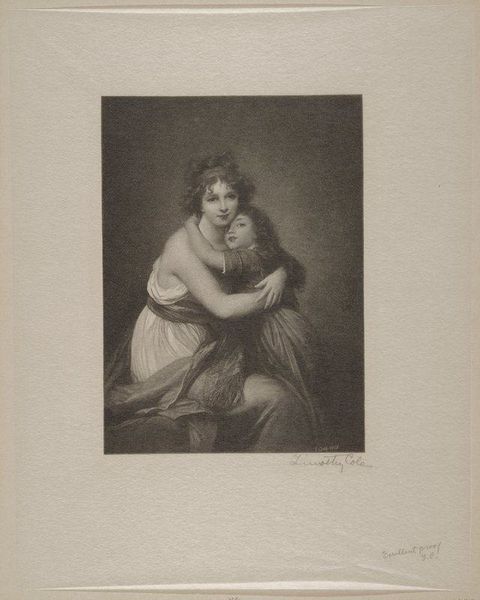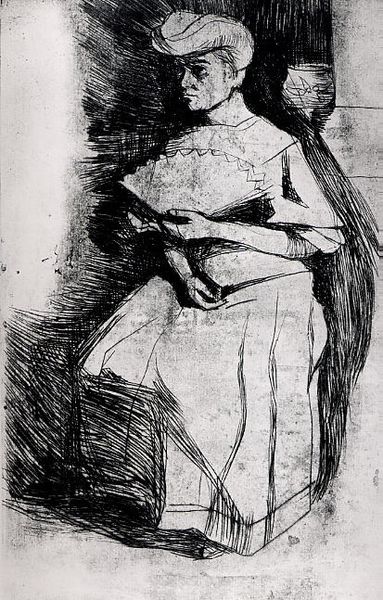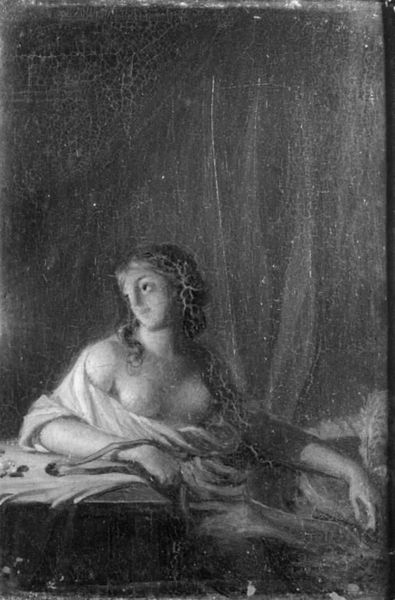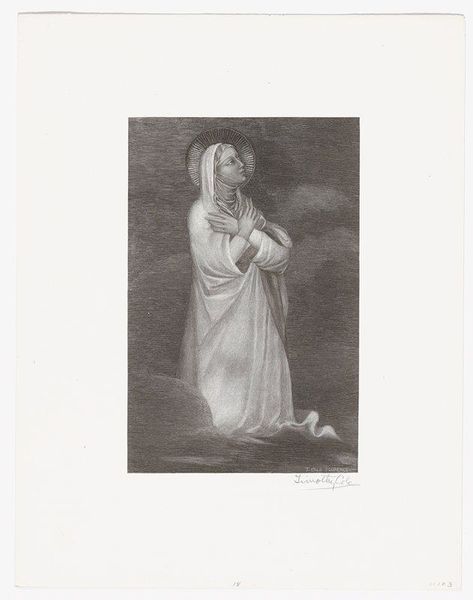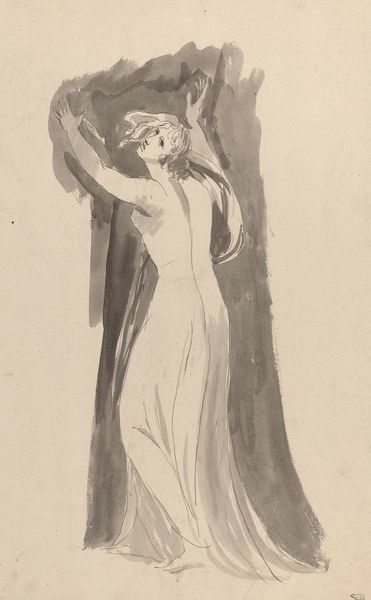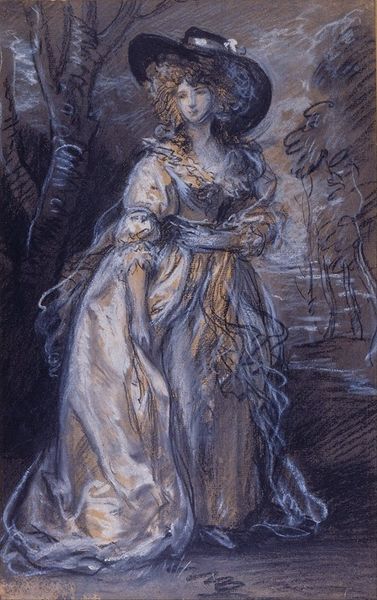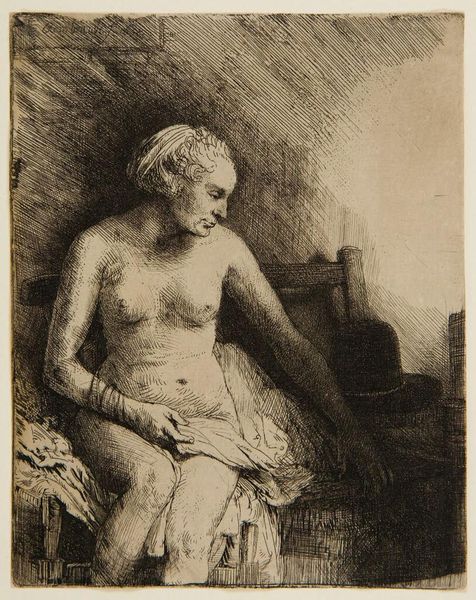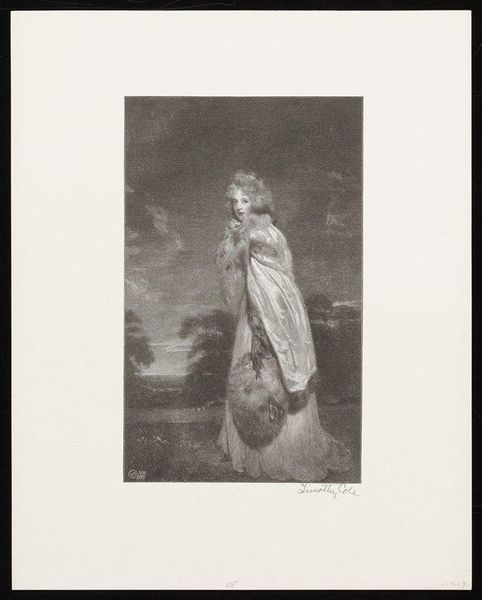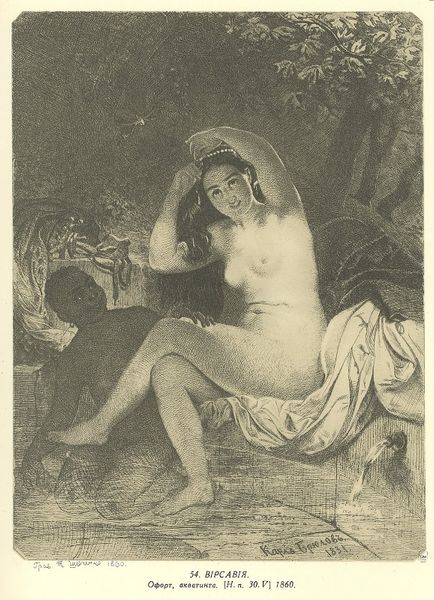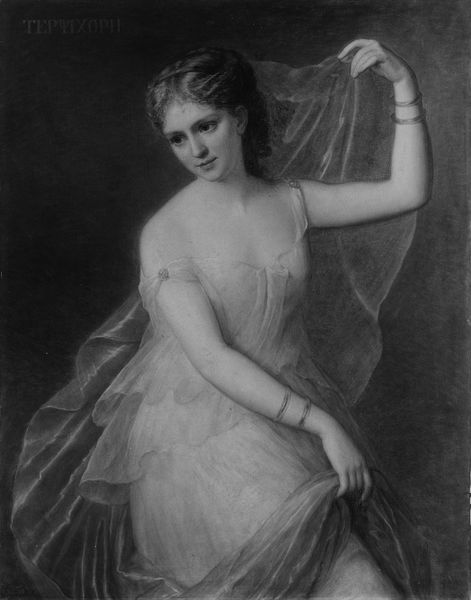
drawing, pencil, graphite
#
portrait
#
drawing
#
narrative-art
#
charcoal drawing
#
figuration
#
romanticism
#
pencil
#
graphite
#
portrait drawing
#
genre-painting
#
charcoal
#
graphite
Dimensions: 19 x 13.5 cm
Copyright: Public domain
Editor: This drawing, "The Commentary," from 1843, is by Paul Gavarni. It's done in graphite and charcoal, and it has this intensely melancholic mood, wouldn’t you agree? There's something so vulnerable about her pose. How do you interpret this work? Curator: Indeed. The vulnerability is key, but let's think about *why* Gavarni chooses to represent her this way. Consider the social constraints on women in 1840s France. What kind of ‘commentary’ might Gavarni be making on their limited roles, their emotional lives being policed? Is he critiquing a system where women’s intellectual pursuits were often dismissed? Editor: That's a fascinating point. So, the open book and her contemplative posture, are they a challenge to those constraints? A subtle act of resistance, perhaps? Curator: Precisely! It’s a quiet rebellion visualized. Gavarni wasn’t just creating a pretty picture; he was inserting this woman into a discourse, hinting at the societal pressures shaping her very being. He prompts us to think about the power dynamics at play, even in this seemingly intimate moment. Think about the Romantic era fascination with emotional depth—who was allowed to *have* those feelings, and express them? Editor: So it’s not just about her individual sadness but a larger statement about the stifling expectations placed upon women at the time? Curator: Exactly! It's about intersectional identity. Gavarni forces us to confront the realities of gender, class, and the allowed spaces for female intellect within a patriarchal society. Editor: I never thought about it that way before. It’s incredible how much context can change the way you view a piece. Thanks! Curator: It's about acknowledging the complexities embedded within art; the image serves as an opening for a much-needed societal dialogue.
Comments
No comments
Be the first to comment and join the conversation on the ultimate creative platform.
